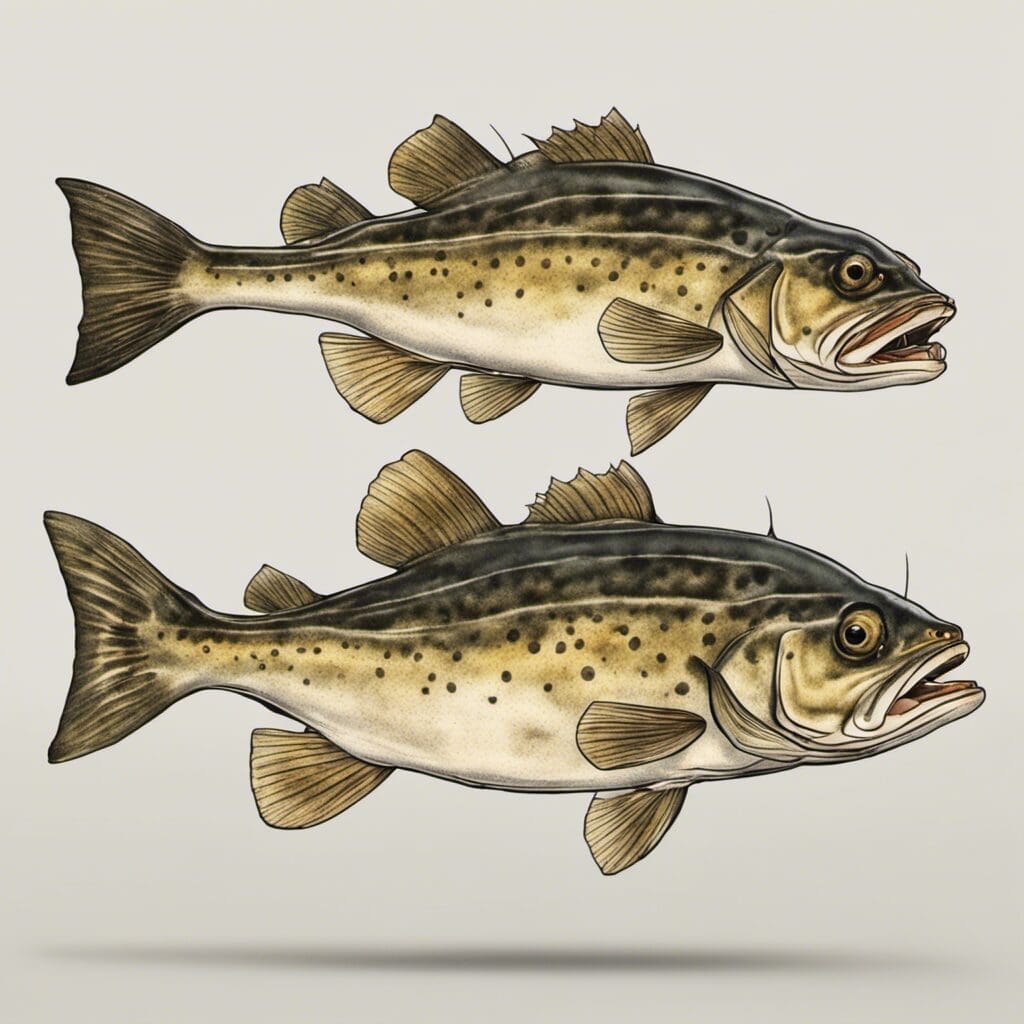Introduction
The Pacific Tomcod, also known as Microgadus proximus, is part of the Gadidae family. This species is a relative to the famous Atlantic cod.
Conservation Status
Pacific Tomcod is not currently classified as endangered. Initiatives to conserve fish populations such as sustainable fishing practices are crucial to ensure it remains abundant.
Statistics
| Statistic | Average | Range |
|---|---|---|
| Length | 25.4 cm (10 inches) | 10 – 35 cm (4 – 14 inches) |
| Weight | 1.8 kg (4 pounds) | 0.5 – 4.5 kg (1 – 10 pounds) |
| Average Lifespan | 6 years |
Distribution
Primarily found along the North Pacific coast, from Northern California up to Southern Alaska. There is little known about Pacific Tomcod’s migration patterns.
Habitats
Pacific Tomcod prefer marine or brackish bodies of water, often spotted in estuaries or near the shore. They typically dwell at depths ranging from 10 to 550 meters below the surface and can tolerate a wide range of water temperatures.
When and Where to See
The Pacific Tomcod is more readily spotted during its spawning season in winter, though it can be caught year-round. It is also more active during the night.
Best Fishing Locations
This species can be found along Pacific coastlines, particularly in the following locations:
1. Columbia River, Oregon
2. Fraser River, British Columbia
3. Puget Sound, Washington
4. Cook Inlet, Alaska
5. Humboldt Bay, California
6. Sacramento River, California
7. Susitna River, Alaska
8. Kuskokwim River, Alaska
9. Skagit River, Washington
10. Snohomish River, Washington
How to Catch
Seaworms and small pieces of shrimp are ideal baits for catching Pacific Tomcod. Bottom fishing is a particularly effective technique, especially during the nighttime when this species is most active.
Identification Guide
Pacific Tomcod are dark olive or muddy gray in color with a pale belly. They have barbels on their chin and three dorsal fins. Unlike the Atlantic Tomcod, they have a rounder body shape and less pronounced lateral line.
Culinary
Pacific Tomcod’s white, flaky flesh is mild and sweet, and can be prepared in a variety of ways, including frying, grilling, and baking. A simple recipe involves seasoning with salt and pepper, dusting with flour, and pan-frying until golden.
Additional Information
Pacific Tomcod feeds on crustaceans, small fish, and mollusks. There are no major predators or threats to the Pacific Tomcod beyond natural marine predators like larger fish and seals. This species plays a crucial role in many indigenous cultures, serving as an important food source and featuring in various myths and legends.
References and Further Reading
For more information, explore the following sources:
1. “Pacific Tomcod (Microgadus proximus)” – Alaska Department of Fish and Game [Link](https://www.adfg.alaska.gov/ “Opens in new tab”)
2. “Pacific Tomcod (Microgadus proximus)” – Chesapeake Bay Program [Link](https://www.chesapeakebay.net/ “Opens in new tab”)
3. “Pacific Tomcod” – Fishes of the NE Pacific [Link](http://www.pac.dfo-mpo.gc.ca/ “Opens in new tab”)
Always remember to practice sustainable fishing methods to help maintain the health and abundance of fish populations like the Pacific Tomcod

